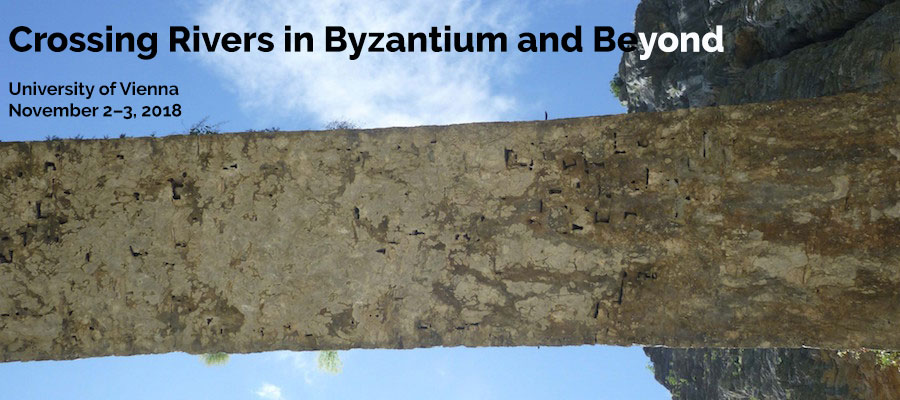Crossing Rivers in Byzantium and Beyond, University of Vienna, November 2–3, 2018
This workshop is organized as part of the project “Byzantine Stone Bridges: Material Evidence and Cultural Meaning,” managed by Dr. Galina Fingarova at the Department of Art History of the University of Vienna. It is generously funded by the Austrian Science Fund (FWF), Elise-Richter-Program.
This project focuses on a long-overlooked aspect of architectural and cultural history – Byzantine stone bridges. It investigates the particularities of this type of architectural monuments built from the fourth to the fifteenth centuries on territories under imperial Byzantine rule. It addresses the following enquiries: 1) reconstructing the significance of Byzantine stone bridges in the context of architectural history by analyzing the structural and technical innovations that are evident in the preserved monuments; and 2) understanding the importance of bridges as sources for a Byzantine cultural and social history, in particular, on a political, symbolic, and metaphorical level.
This workshop will expand on the project’s research questions and methodological approaches by placing these in a broader context. The workshop encourages an interdisciplinary discourse on the unique characteristic of rivers to define territories and boundaries and on their crossing as a means of connection in a real and figurative sense. It seeks to transcend both the territorial and chronological limits of the Byzantine Empire.
Confirmed Keynote: Professor Jim Crow (University of Edinburgh)
Scholars working in the fields of Roman, Late Antique, Byzantine, Medieval, Ottoman, and Middle Eastern Studies are invited to submit proposals for 20-minute papers connected with but not limited to the following topics:
- Riverine landscapes;
- River crossings as political, social, military, or commercial events;
- Urban and rural communities on and along rivers;
- Architectural and engineering achievements in hydrology;
- Ford and ferry;
- Pontoon, wooden, and stone bridges;
- Related structures such as aqueducts, mills, etc.;
- Mythological and religious aspects of river crossings;
- Emotional experiences at or traversing rivers.
